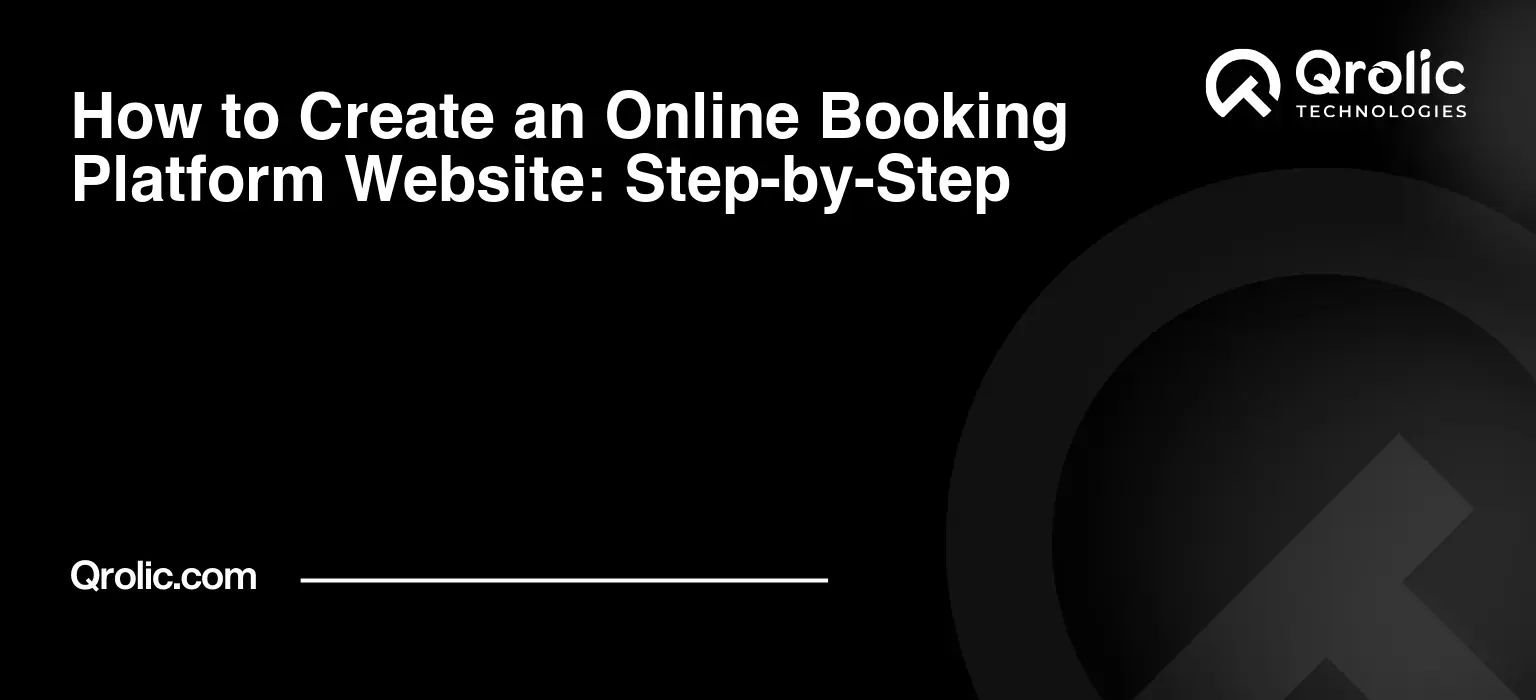Quick Summary:
- Define your niche, audience, and essential features first.
- Design for smooth user experience and secure payments.
- Optimize for search, test rigorously, and market well.
- Continuously analyze data to improve your platform.
Table of Contents
- 1. Defining Your Niche and Target Audience: The Foundation of Your Booking Empire
- 1.1 Identifying Your Niche: What Problem Are You Solving?
- 1.2 Understanding Your Target Audience: Who Are You Serving?
- 1.3 Market Research: Spying on the Competition (Ethically)
- 2. Defining Core Features and Functionality: The Blueprint of Your Platform
- 2.1 Essential Features: The Must-Haves
- 2.2 Advanced Features: Differentiating Your Platform
- 2.3 Prioritizing Features: The Eisenhower Matrix
- 3. Choosing the Right Technology Stack: Building Your Digital Fortress
- 3.1 Front-End Development: The User Interface
- 3.2 Back-End Development: The Engine Room
- 3.3 Booking System Software or Custom Development: Weighing the Options
- 4. Designing the User Interface (UI) and User Experience (UX): Creating a Seamless Journey
- 4.1 User Research and Personas: Understanding Your Users’ Needs
- 4.2 Wireframing and Prototyping: Planning the User Flow
- 4.3 Visual Design: Creating an Appealing Aesthetic
- 4.4 Usability Testing: Validating Your Design
- 5. Implementing Payment Gateway Integration: Secure Transactions
- 5.1 Choosing a Payment Gateway: Finding the Right Fit
- 5.2 Implementing the Payment Gateway: A Step-by-Step Guide
- 5.3 Security Best Practices: Protecting Sensitive Data
- 6. Setting Up Notifications and Reminders: Keeping Everyone in the Loop
- 6.1 Types of Notifications: Covering All the Bases
- 6.2 Choosing a Notification Service: Connecting with Customers
- 6.3 Customizing Notifications: Branding and Personalization
- 7. SEO Optimization: Making Your Platform Discoverable
- 7.1 Keyword Research: Finding the Right Terms
- 7.2 On-Page Optimization: Making Your Website Search Engine Friendly
- 7.3 Off-Page Optimization: Building Your Website’s Authority
- 8. Testing and Launching Your Platform: Taking It Live
- 8.1 Types of Testing: Finding the Bugs
- 8.2 Launching Your Platform: Making a Splash
- 9. Marketing and Promotion: Getting the Word Out
- 9.1 Content Marketing: Providing Value to Your Audience
- 9.2 Social Media Marketing: Connecting with Your Audience
- 9.3 Email Marketing: Nurturing Your Leads
- 9.4 Paid Advertising: Reaching a Wider Audience
- 10. Analytics and Optimization: Continuously Improving
- 10.1 Tracking Key Metrics: Measuring Success
- 10.2 Using Analytics Tools: Understanding User Behavior
- 10.3 Iterating Based on Data: Making Informed Decisions
- 11. Qrolic Technologies: Your Partner in Building Online Booking Platforms
- 11.1 Expertise and Experience
- 11.2 Services Offered
- 11.3 Why Choose Qrolic Technologies?
1. Defining Your Niche and Target Audience: The Foundation of Your Booking Empire
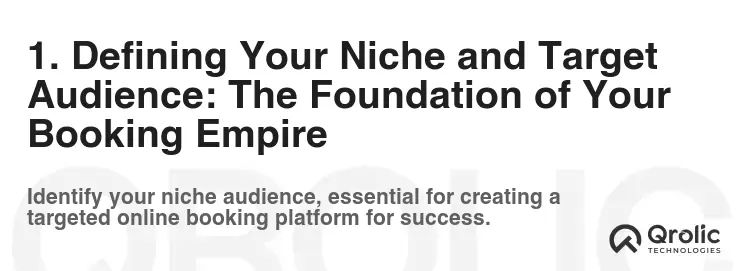
Before diving into the technicalities of website building, pinpointing your niche is crucial. Think of it as laying the cornerstone of your online booking empire. A blurry focus dilutes your efforts, whereas a laser-sharp focus attracts the right customers. This stage also requires thorough market research. Understanding your competitors, their strengths, and weaknesses will help you differentiate your online booking platform.
1.1 Identifying Your Niche: What Problem Are You Solving?
What specific need are you fulfilling with your online booking platform? Are you targeting a broad market like general appointments, or a niche one like luxury pet grooming? Consider these examples:
- Fitness Classes: Focus on yoga studios, CrossFit gyms, or specialized dance classes.
- Beauty Services: Target salons, spas, barbershops, or freelance makeup artists.
- Travel & Accommodation: Specialize in boutique hotels, unique Airbnb experiences, or niche travel packages.
- Event Ticketing: Concentrate on local concerts, workshops, or specialized conferences.
- Equipment Rentals: Offer booking for photography gear, sports equipment, or event supplies.
- Consultations: Provide a platform for therapists, coaches, or legal advisors.
The more specific you are, the easier it is to tailor your marketing, features, and overall platform experience. The key to find out is what kind of services you want to offer through the platform.
1.2 Understanding Your Target Audience: Who Are You Serving?
Knowing who you’re building the platform for is just as important as knowing what you’re building. Create detailed user personas that represent your ideal customer. Consider factors like:
- Demographics: Age, gender, location, income, education.
- Psychographics: Interests, values, lifestyle, pain points.
- Technological Proficiency: How comfortable are they with online booking systems?
- Booking Habits: How often do they book these types of services? What are their preferred booking methods?
- Motivations: What drives them to book online? Convenience? Price? Availability?
For example, if you’re building a platform for yoga studios, your target audience might be health-conscious individuals aged 25-55, tech-savvy, and value convenience and flexibility in scheduling.
1.3 Market Research: Spying on the Competition (Ethically)
Analyze existing online booking platforms in your niche. Identify:
- Strengths: What are they doing well? What do users love about their platform?
- Weaknesses: Where do they fall short? What are users complaining about?
- Pricing Strategies: How do they price their services? Do they offer discounts or promotions?
- Features: What features do they offer? What are the essential features for your niche?
- Marketing Tactics: How are they attracting customers?
Use tools like SEMrush, Ahrefs, and SimilarWeb to analyze their website traffic, keyword rankings, and marketing strategies. Pay close attention to online reviews (Google Reviews, Yelp, etc.) to understand customer sentiment. This research will inform your platform’s unique value proposition and help you differentiate yourself from the competition.
2. Defining Core Features and Functionality: The Blueprint of Your Platform
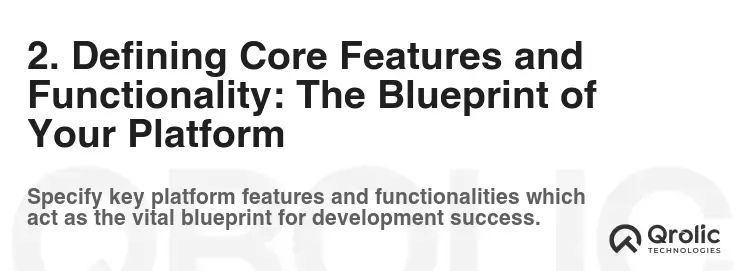
Now that you understand your target audience and niche, it’s time to define the core features and functionality of your online booking platform. This is where you translate your vision into a concrete plan. Prioritize features based on user needs and market demand.
2.1 Essential Features: The Must-Haves
These are the foundational elements that every online booking platform needs:
- User Accounts: Secure registration and login for both customers and service providers (if applicable).
- Service/Resource Listings: A clear and organized catalog of services, appointments, or resources available for booking. Detailed descriptions, images, and pricing information are essential.
- Calendar & Availability Management: Real-time display of availability, allowing customers to easily see available time slots. Service providers need tools to manage their schedules, set working hours, and block out unavailable times.
- Booking Process: A streamlined and intuitive booking flow, minimizing the number of steps required to complete a reservation.
- Payment Gateway Integration: Secure and reliable payment processing through integrations with popular payment gateways like Stripe, PayPal, or Square.
- Notifications & Reminders: Automated email and SMS notifications to confirm bookings, send reminders, and provide updates.
- Reporting & Analytics: Basic reporting on booking volume, revenue, and customer behavior.
2.2 Advanced Features: Differentiating Your Platform
These features can set your platform apart and enhance the user experience:
- Membership Management: Allow users to create and manage memberships for recurring services or discounted pricing.
- Package Deals: Offer bundled services or packages at a discounted rate.
- Gift Certificates: Enable users to purchase and redeem gift certificates.
- Waitlists: Allow users to join a waitlist for fully booked services.
- Reviews & Ratings: Enable customers to leave reviews and ratings for service providers.
- Integration with Third-Party Tools: Integrate with CRM systems, marketing automation tools, and other relevant platforms.
- Multiple Locations: Support businesses with multiple locations, allowing users to select their preferred location.
- Staff Management: For businesses with multiple staff members, allow them to manage their individual schedules and bookings.
- Customizable Booking Forms: Allow service providers to create custom booking forms to collect specific information from customers.
- Dynamic Pricing: Implement dynamic pricing based on demand, time of day, or other factors.
- Zoom Integration: Integrate with Zoom or other video conferencing platforms for virtual appointments.
- Mobile App (Optional): Develop a mobile app for iOS and Android to provide a seamless booking experience on mobile devices.
2.3 Prioritizing Features: The Eisenhower Matrix
Not all features are created equal. Use the Eisenhower Matrix (Urgent/Important) to prioritize features based on their impact and urgency:
- Urgent & Important: These are your core features that are essential for launch. (e.g., User Accounts, Booking Process, Payment Gateway Integration).
- Important, But Not Urgent: These are features that will enhance the user experience but can be implemented later. (e.g., Membership Management, Package Deals).
- Urgent, But Not Important: These are tasks that need to be addressed but can be delegated or automated. (e.g., Responding to customer inquiries).
- Neither Urgent Nor Important: These are features that can be eliminated or postponed indefinitely. (e.g., Features that are not aligned with your target audience’s needs).
3. Choosing the Right Technology Stack: Building Your Digital Fortress

The technology stack is the foundation upon which your online booking platform will be built. Choosing the right technologies is critical for scalability, performance, and maintainability.
3.1 Front-End Development: The User Interface
The front-end is what users see and interact with. It’s crucial to choose technologies that deliver a responsive, intuitive, and visually appealing user experience.
- HTML, CSS, and JavaScript: These are the foundational technologies for building web applications. HTML provides the structure, CSS handles the styling, and JavaScript adds interactivity.
- JavaScript Frameworks: Frameworks like React, Angular, and Vue.js provide structure and tools for building complex user interfaces. React is a popular choice for its component-based architecture and performance.
- UI Libraries: UI libraries like Bootstrap and Material UI provide pre-built components and styles to accelerate front-end development.
- Responsive Design: Ensure your platform is responsive and adapts to different screen sizes and devices. Use CSS frameworks like Bootstrap or implement custom media queries.
3.2 Back-End Development: The Engine Room
The back-end handles the server-side logic, database management, and API integrations.
- Programming Languages: Popular choices include Python (with Django or Flask), Node.js (with Express), Ruby on Rails, and PHP (with Laravel).
- Databases: Relational databases like MySQL, PostgreSQL, and SQL Server are commonly used for storing structured data. NoSQL databases like MongoDB are suitable for handling unstructured data.
- APIs: APIs (Application Programming Interfaces) are used to communicate between the front-end and back-end. RESTful APIs are a popular choice for web applications.
- Server Infrastructure: Choose a cloud provider like AWS, Google Cloud Platform, or Azure to host your application. Consider using containerization technologies like Docker and Kubernetes for scalability and deployment.
3.3 Booking System Software or Custom Development: Weighing the Options
You have two main options for building the core booking functionality:
-
Booking System Software: Use a pre-built booking system like Acuity Scheduling, Calendly, or Bookly. These platforms offer a range of features and integrations.
- Pros: Faster development, lower initial cost, pre-built features.
- Cons: Limited customization, potential for vendor lock-in, less control over the platform.
-
Custom Development: Build the booking functionality from scratch using a programming language and database.
- Pros: Complete control over the platform, maximum customization, no vendor lock-in.
- Cons: Higher development cost, longer development time, requires specialized technical expertise.
The best option depends on your budget, technical expertise, and specific requirements. If you need a highly customized platform and have the resources, custom development is the way to go. If you need a quick and affordable solution, a pre-built booking system might be a better choice.
4. Designing the User Interface (UI) and User Experience (UX): Creating a Seamless Journey

The UI/UX design is crucial for attracting and retaining users. A well-designed platform is intuitive, visually appealing, and easy to use.
4.1 User Research and Personas: Understanding Your Users’ Needs
Before starting the design process, conduct user research to understand your target audience’s needs and preferences. Create user personas that represent your ideal customers.
- Interviews: Conduct interviews with potential users to gather feedback on their booking habits and pain points.
- Surveys: Create online surveys to collect quantitative data on user preferences.
- Usability Testing: Observe users as they interact with your platform to identify usability issues.
4.2 Wireframing and Prototyping: Planning the User Flow
Create wireframes and prototypes to visualize the user flow and test different design concepts.
- Wireframes: Create low-fidelity wireframes to outline the basic structure and layout of each page.
- Prototypes: Create interactive prototypes to simulate the user experience and test different interactions.
- Tools: Use tools like Figma, Sketch, and Adobe XD to create wireframes and prototypes.
4.3 Visual Design: Creating an Appealing Aesthetic
Create a visual design that is consistent with your brand and appeals to your target audience.
- Branding: Use your brand colors, fonts, and logo throughout the platform.
- Imagery: Use high-quality images and videos to showcase your services.
- Typography: Choose fonts that are easy to read and visually appealing.
- Color Palette: Use a color palette that is consistent with your brand and creates a positive user experience.
4.4 Usability Testing: Validating Your Design
Conduct usability testing to identify and fix usability issues before launching the platform.
- Recruit Participants: Recruit participants who represent your target audience.
- Define Tasks: Define specific tasks for participants to complete on the platform.
- Observe Participants: Observe participants as they complete the tasks and identify any usability issues.
- Gather Feedback: Gather feedback from participants on their overall experience.
- Iterate on Design: Iterate on the design based on the feedback and usability testing results.
5. Implementing Payment Gateway Integration: Secure Transactions
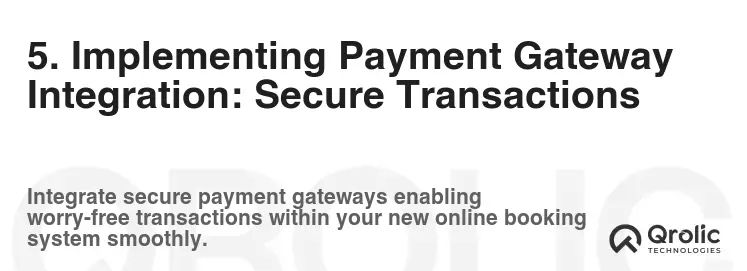
Integrating a secure and reliable payment gateway is crucial for processing online payments.
5.1 Choosing a Payment Gateway: Finding the Right Fit
Consider these factors when choosing a payment gateway:
- Pricing: Compare the transaction fees and monthly fees of different payment gateways.
- Security: Choose a payment gateway that is PCI DSS compliant.
- Supported Payment Methods: Ensure the payment gateway supports the payment methods preferred by your target audience.
- Integration: Ensure the payment gateway integrates seamlessly with your technology stack.
- Customer Support: Choose a payment gateway that offers excellent customer support.
Popular payment gateways include:
- Stripe: A popular choice for its developer-friendly APIs and competitive pricing.
- PayPal: A widely recognized and trusted payment gateway.
- Square: A good option for businesses that also accept in-person payments.
- Authorize.net: A reliable and established payment gateway.
5.2 Implementing the Payment Gateway: A Step-by-Step Guide
The implementation process typically involves these steps:
- Create an Account: Sign up for an account with your chosen payment gateway.
- Obtain API Keys: Obtain the API keys required to integrate with the payment gateway.
- Integrate with Your Platform: Use the payment gateway’s API to integrate with your platform. This typically involves adding code to handle payment processing, transaction confirmation, and error handling.
- Test the Integration: Thoroughly test the integration to ensure that payments are processed correctly.
- Go Live: Once you have tested the integration, you can go live and start accepting payments.
5.3 Security Best Practices: Protecting Sensitive Data
Implement these security best practices to protect sensitive data:
- Use HTTPS: Use HTTPS to encrypt all communication between the user’s browser and your server.
- Store Sensitive Data Securely: Store sensitive data, such as credit card numbers, securely using encryption and tokenization.
- Regularly Update Your Software: Regularly update your software to patch security vulnerabilities.
- Implement Fraud Detection: Implement fraud detection measures to prevent fraudulent transactions.
- Comply with PCI DSS: Comply with the Payment Card Industry Data Security Standard (PCI DSS).
6. Setting Up Notifications and Reminders: Keeping Everyone in the Loop
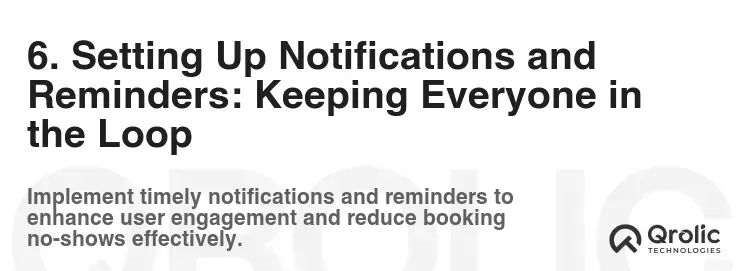
Automated notifications and reminders are essential for reducing no-shows and improving customer satisfaction.
6.1 Types of Notifications: Covering All the Bases
Implement these types of notifications:
- Booking Confirmation: Send a confirmation email and SMS message immediately after a booking is made.
- Booking Reminder: Send a reminder email and SMS message 24-48 hours before the appointment.
- Cancellation Confirmation: Send a confirmation email and SMS message when a booking is cancelled.
- Rescheduling Confirmation: Send a confirmation email and SMS message when a booking is rescheduled.
- Payment Confirmation: Send a confirmation email when a payment is received.
6.2 Choosing a Notification Service: Connecting with Customers
Consider these factors when choosing a notification service:
- Reliability: Choose a service that is reliable and delivers notifications promptly.
- Pricing: Compare the pricing of different notification services.
- Integration: Ensure the service integrates seamlessly with your technology stack.
- Customization: Choose a service that allows you to customize the content and branding of your notifications.
- Scalability: Choose a service that can handle your growing notification volume.
Popular notification services include:
- Twilio: A popular choice for SMS notifications.
- SendGrid: A popular choice for email notifications.
- Mailgun: Another popular choice for email notifications.
- Firebase Cloud Messaging (FCM): A free option for sending push notifications to mobile apps.
6.3 Customizing Notifications: Branding and Personalization
Customize the content and branding of your notifications to create a consistent user experience.
- Use Your Brand Colors and Logo: Include your brand colors and logo in your notifications.
- Personalize the Messages: Personalize the messages with the user’s name and booking details.
- Include Clear Call to Actions: Include clear call to actions, such as “View Booking” or “Reschedule Appointment.”
- Test Your Notifications: Test your notifications to ensure that they are delivered correctly and look good on different devices.
7. SEO Optimization: Making Your Platform Discoverable
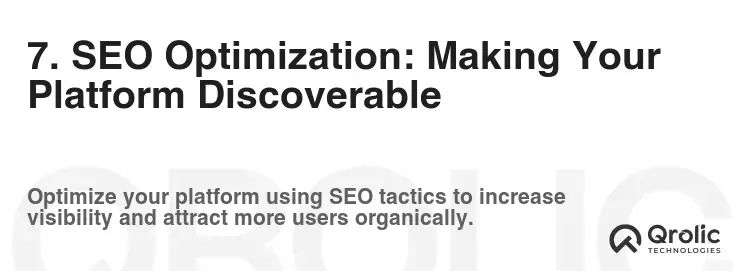
SEO (Search Engine Optimization) is crucial for attracting organic traffic to your online booking platform.
7.1 Keyword Research: Finding the Right Terms
Conduct keyword research to identify the keywords that your target audience is using to search for your services.
- Use Keyword Research Tools: Use tools like Google Keyword Planner, SEMrush, and Ahrefs to identify relevant keywords.
- Focus on Long-Tail Keywords: Focus on long-tail keywords, which are more specific and have less competition.
- Analyze Your Competitors’ Keywords: Analyze your competitors’ keywords to identify opportunities.
7.2 On-Page Optimization: Making Your Website Search Engine Friendly
Optimize your website for search engines by:
- Using Relevant Keywords in Your Titles and Descriptions: Use relevant keywords in your page titles and meta descriptions.
- Creating High-Quality Content: Create high-quality, informative content that is relevant to your target audience.
- optimizing Your Images: Optimize your images by using descriptive file names and alt tags.
- Improving Your Website Speed: Improve your website speed by optimizing your images, using a content delivery network (CDN), and minimizing HTTP requests.
- Using Internal Linking: Use internal linking to connect your pages and improve your website’s crawlability.
- Ensuring Mobile Friendliness: Ensure your website is mobile-friendly and responsive.
7.3 Off-Page Optimization: Building Your Website’s Authority
Build your website’s authority by:
- Earning High-Quality Backlinks: Earn high-quality backlinks from reputable websites.
- Creating Shareable Content: Create shareable content that people will want to link to.
- Promoting Your Website on Social Media: Promote your website on social media.
- Participating in Online Communities: Participate in online communities and forums.
- Building Relationships with Influencers: Build relationships with influencers in your niche.
8. Testing and Launching Your Platform: Taking It Live
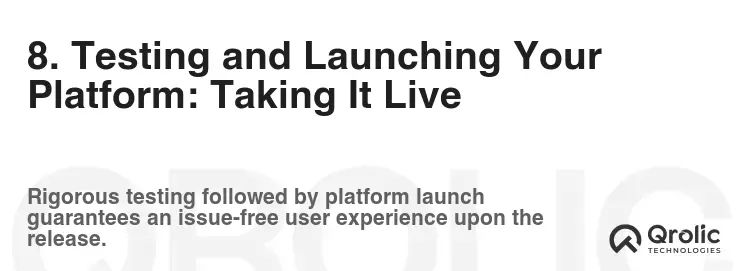
Thorough testing is crucial before launching your online booking platform.
8.1 Types of Testing: Finding the Bugs
Conduct these types of testing:
- Unit Testing: Test individual components of your code to ensure that they are working correctly.
- Integration Testing: Test the integration between different components of your system.
- System Testing: Test the entire system to ensure that it is working as expected.
- User Acceptance Testing (UAT): Have real users test the platform to identify any usability issues.
- Performance Testing: Test the platform’s performance under load to ensure that it can handle a large number of users.
- Security Testing: Test the platform for security vulnerabilities.
8.2 Launching Your Platform: Making a Splash
Follow these steps to launch your platform:
- Choose a Domain Name: Choose a domain name that is relevant to your business and easy to remember.
- Choose a Hosting Provider: Choose a hosting provider that is reliable and offers good performance.
- Deploy Your Code: Deploy your code to your hosting provider.
- Configure Your DNS Settings: Configure your DNS settings to point your domain name to your hosting provider.
- Test Your Platform: Thoroughly test your platform to ensure that everything is working correctly.
- Announce Your Launch: Announce your launch on social media, email, and other channels.
- Monitor Your Platform: Monitor your platform for any issues and make necessary adjustments.
9. Marketing and Promotion: Getting the Word Out
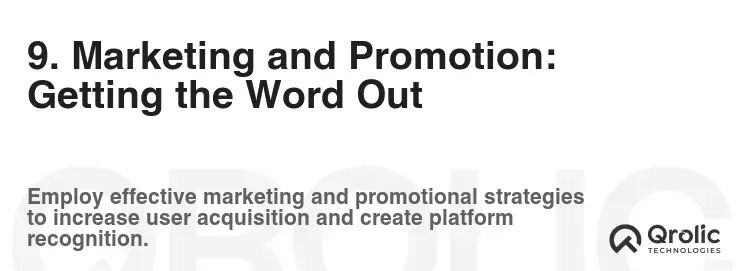
Marketing and promotion are crucial for attracting users to your online booking platform.
9.1 Content Marketing: Providing Value to Your Audience
Create valuable content that attracts and engages your target audience.
- Blog Posts: Write blog posts on topics that are relevant to your target audience.
- Infographics: Create infographics to visually communicate complex information.
- Videos: Create videos to showcase your services and provide tutorials.
- Case Studies: Create case studies to highlight the success stories of your customers.
- Ebooks: Create ebooks to provide in-depth information on a specific topic.
9.2 Social Media Marketing: Connecting with Your Audience
Use social media to connect with your target audience and promote your platform.
- Choose the Right Platforms: Choose the social media platforms that are most popular with your target audience.
- Create Engaging Content: Create engaging content that is relevant to your target audience.
- Run Social Media Ads: Run social media ads to reach a wider audience.
- Engage with Your Followers: Engage with your followers by responding to their comments and messages.
- Run Contests and Giveaways: Run contests and giveaways to generate excitement and attract new followers.
9.3 Email Marketing: Nurturing Your Leads
Use email marketing to nurture your leads and promote your platform.
- Build an Email List: Build an email list by offering a freebie or incentive for signing up.
- Segment Your Email List: Segment your email list based on demographics, interests, and behavior.
- Send Targeted Emails: Send targeted emails that are relevant to each segment of your email list.
- Automate Your Email Marketing: Automate your email marketing using a tool like Mailchimp or ConvertKit.
- Track Your Email Marketing Performance: Track your email marketing performance to see what’s working and what’s not.
9.4 Paid Advertising: Reaching a Wider Audience
Use paid advertising to reach a wider audience.
- Google Ads: Run Google Ads to target users who are searching for your services on Google.
- Social Media Ads: Run social media ads to target users on social media platforms.
- Retargeting Ads: Run retargeting ads to target users who have visited your website but haven’t yet booked a service.
10. Analytics and Optimization: Continuously Improving
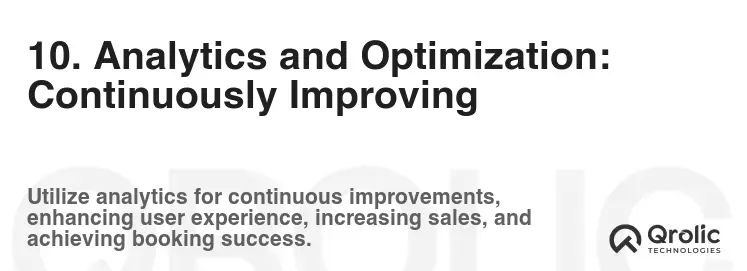
Analytics and optimization are crucial for continuously improving your online booking platform.
10.1 Tracking Key Metrics: Measuring Success
Track these key metrics:
- Website Traffic: Track your website traffic to see how many people are visiting your platform.
- Conversion Rate: Track your conversion rate to see how many people are booking services.
- Customer Acquisition Cost (CAC): Track your customer acquisition cost to see how much it costs to acquire a new customer.
- Customer Lifetime Value (CLTV): Track your customer lifetime value to see how much revenue each customer generates over their lifetime.
- Churn Rate: Track your churn rate to see how many customers are leaving your platform.
10.2 Using Analytics Tools: Understanding User Behavior
Use analytics tools to understand user behavior on your platform.
- Google Analytics: Use Google Analytics to track website traffic, user behavior, and conversions.
- Heatmaps: Use heatmaps to see where users are clicking on your website.
- Session Recordings: Use session recordings to see how users are interacting with your platform.
- A/B Testing: Use A/B testing to test different versions of your website and see which performs better.
10.3 Iterating Based on Data: Making Informed Decisions
Iterate on your platform based on data and feedback.
- Identify Areas for Improvement: Identify areas where your platform can be improved based on analytics data and user feedback.
- Prioritize Improvements: Prioritize improvements based on their potential impact and feasibility.
- Implement Changes: Implement changes and track their impact on key metrics.
- Continuously Optimize: Continuously optimize your platform to improve user experience and increase conversions.
11. Qrolic Technologies: Your Partner in Building Online Booking Platforms
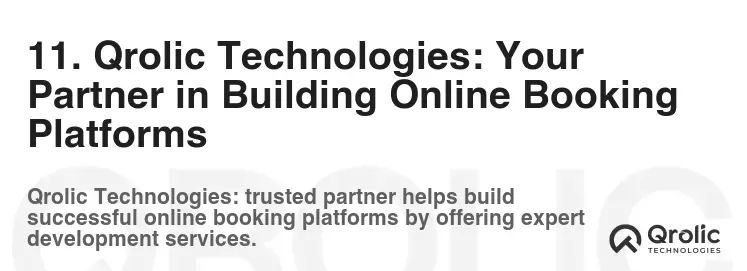
Qrolic Technologies (https://qrolic.com/) is a leading provider of custom software development services, specializing in building robust and scalable online booking platforms. With a team of experienced developers, designers, and project managers, Qrolic Technologies can help you create a platform that meets your specific needs and exceeds your expectations.
11.1 Expertise and Experience
Qrolic Technologies has a proven track record of building successful online booking platforms for a variety of industries. Their expertise includes:
- Custom Software Development: Building custom booking systems from scratch to meet your unique requirements.
- API Integration: Seamlessly integrating with payment gateways, CRM systems, and other third-party tools.
- UI/UX Design: Creating user-friendly and visually appealing interfaces that enhance the booking experience.
- Mobile App Development: Developing mobile apps for iOS and Android to provide a seamless booking experience on mobile devices.
- SEO Optimization: Optimizing your platform for search engines to attract organic traffic.
- Cloud Hosting and Management: Providing reliable and scalable cloud hosting solutions.
11.2 Services Offered
Qrolic Technologies offers a comprehensive range of services to help you build and launch your online booking platform:
- Consultation and Planning: Understanding your business needs and developing a detailed project plan.
- Design and Development: Designing and developing your platform using the latest technologies.
- Testing and Quality Assurance: Thoroughly testing your platform to ensure that it is working correctly.
- Deployment and Launch: Deploying and launching your platform on your chosen hosting provider.
- Maintenance and Support: Providing ongoing maintenance and support to ensure that your platform is running smoothly.
11.3 Why Choose Qrolic Technologies?
- Experienced Team: A team of experienced developers, designers, and project managers.
- Custom Solutions: Tailored solutions to meet your specific needs.
- Scalable Architecture: Building scalable platforms that can handle your growing business.
- Competitive Pricing: Offering competitive pricing and flexible payment options.
- Excellent Customer Support: Providing excellent customer support and communication throughout the project.
If you’re looking for a reliable and experienced partner to help you build your online booking platform, contact Qrolic Technologies today.
